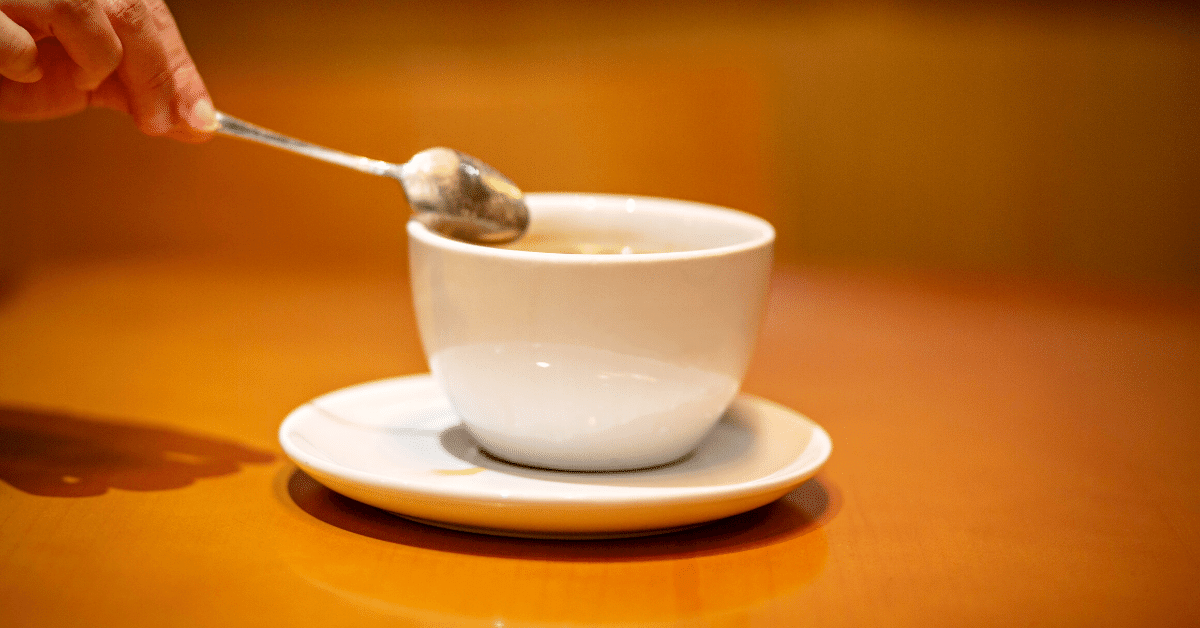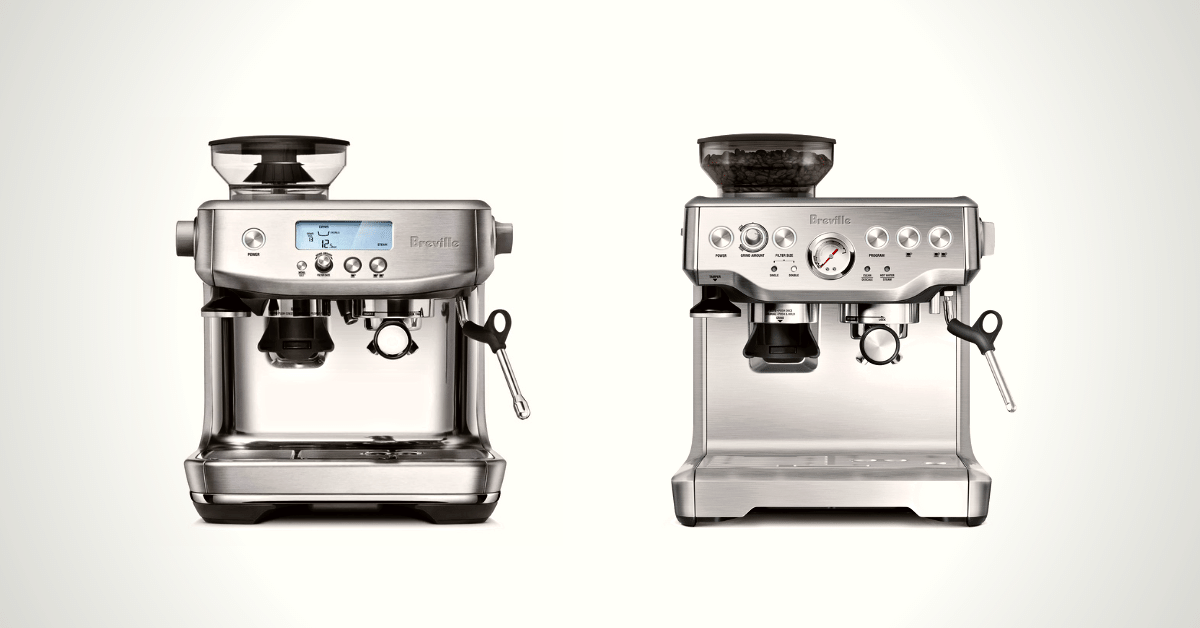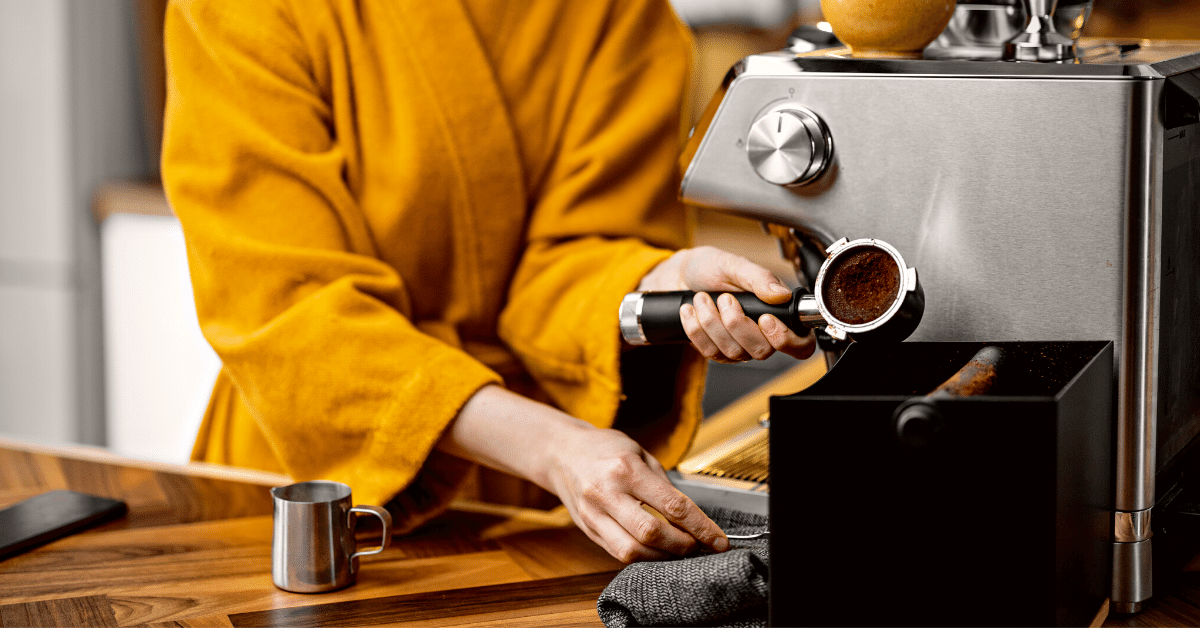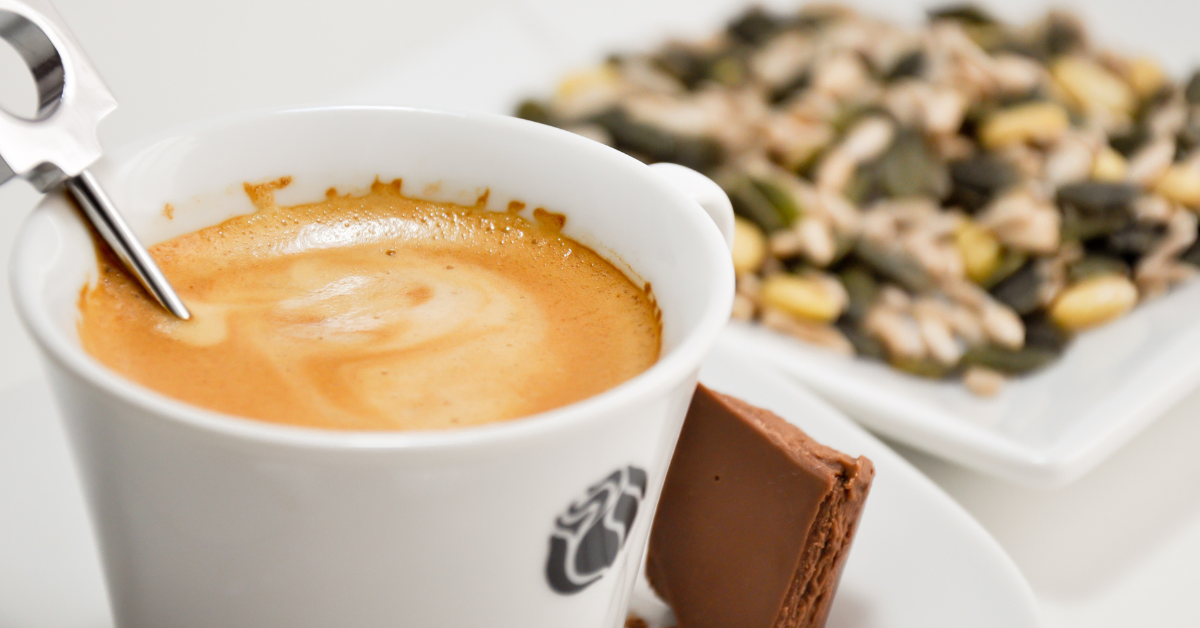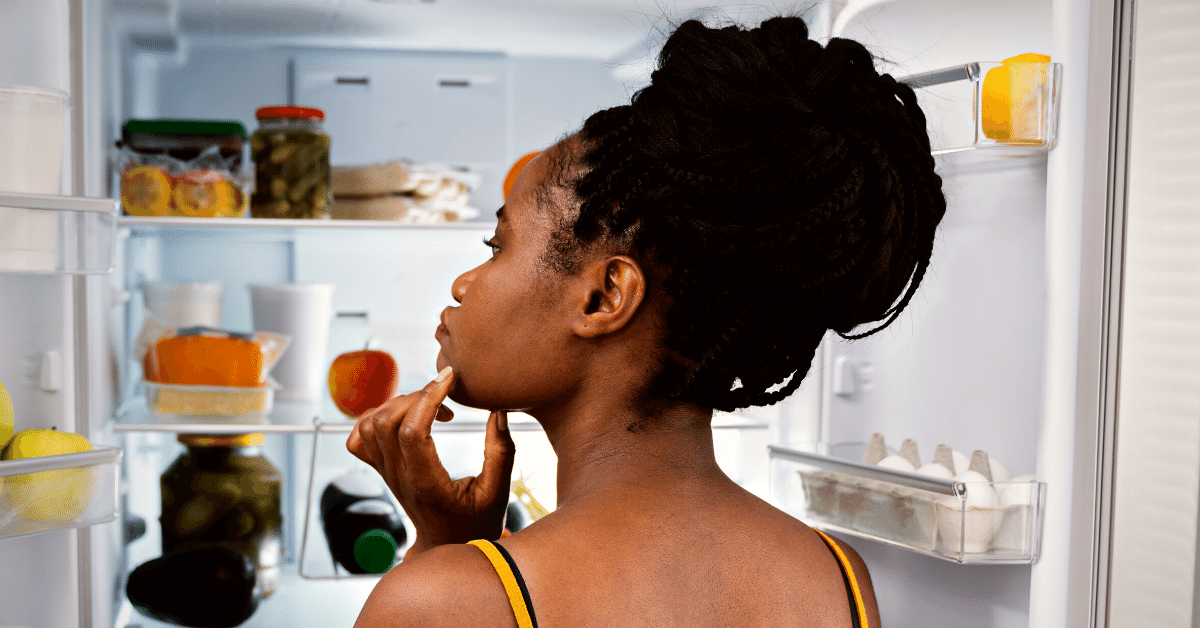Have you ever prepared a cup of coffee in the morning only to find your creamer swimming in your brew in big, chunky clumps?
If so, you’re probably wondering, “why is my coffee creamer chunky?”
In this guide, we’ll go through a couple of the different reasons why that might happen. And, I’ll give you some tips to prevent it.
Let’s jump in!
Why is Your Coffee Creamer Chunky?
The most obvious reason your coffee creamer is getting chunky is that it’s past its expiration date. In that case, it’s time to replace it.
But, there are other reasons that could be to blame, too.
Luckily, if your creamer hasn’t just gone off, there are a couple of things you can do to fix this situation.
Let’s take a look at these other possible causes of chunky coffee creamer and what to do about them.
1. Your Coffee Has High Acidity
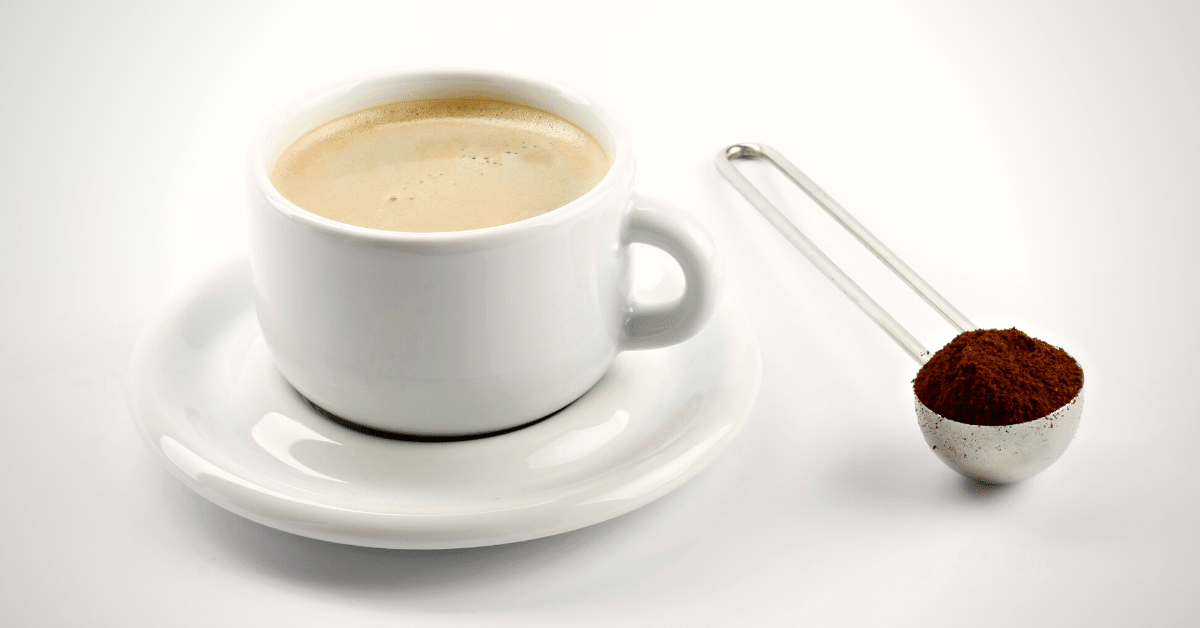
Coffee is generally acidic, with pH values ranging from 4.85 to 5.10.
The reason behind the coffee’s acidity is because of its brewing process. While coffee is brewing, the beans release nine different acids.
The nine acids (ranked from greatest to least concentration) are:
- Chlorogenic
- Quinic
- Citric
- Acetic
- Lactic
- Malic
- Phosphoric
- Linoleic
- Palmitic
Because of these acids, the creamer you add can curdle and turn sour. Think of it like adding lemon juice to milk.
The coffee’s acidity causes milk proteins or casein to coagulate together. This leads to the particles of your creamer floating around your coffee.
Try the following simple hacks to prevent the creamer from curdling because of your acidic coffee.
Add Salt to Your Coffee
Salt is basic, so it will neutralize your coffee’s acidity. Doing this can help stop your creamer from forming chunks in your cup of joe.
Even though it sounds a bit odd, you don’t need a lot. Just a pinch should be enough to prevent the creamer from curdling without spoiling the taste of your coffee.
Add A Pinch of Baking Soda
Baking soda should also work. Again, I know it sounds weird, but trust me, it works!
Wine connoisseurs add baking soda to wines and champagnes to reduce their acidity, and the trick also works for coffee!
Just remember to put a very small amount. You don’t need much to prevent your creamer from getting chunky.
Use Dark Roast Beans
Coffee beans roasted longer and at higher temperatures break down more chlorogenic acids. In other words, the darker the roast, the fewer acids the beans have.
That’s why lighter roasts are more acidic than darker roasts.
If you’re worried about your creamer congealing, try switching to darker roast coffee. This can sometimes be enough to stop your creamer from forming lumps.
Add Eggshells to the Coffee Grinds
Egg shells can also alkalize your ground coffee. Add clean, crushed egg shells to your ground coffee.
Then, brew your coffee as usual. Just don’t crush the eggshells too finely, or they can get through your coffee filter and into your brew.
Choose Coffee Beans from Lower Elevations
Low elevations, like Sumatra, produce less acidic coffee.
If you don’t want to mess about with DIY hacks, just choose coffee beans sourced from lower altitudes.
Generally, you’ll find these are a bit gentler on your coffee creamer.
2. Sudden Coffee Temperature Changes

Coffee creamers are sensitive to various temperatures, thanks to the milk proteins acting up in the creamer.
The ideal temperature to add creamer ranges from 180 to 190ºF.
When you brew your coffee, if it’s too hot, allow it to sit for a minute or two. This lets the coffee cool down enough for you to add the creamer without it curdling.
Here are a couple of other ways to solve your temperature troubles.
Wait For A Few Seconds
As mentioned above, the easiest way to let your coffee’s temperature drop is to just wait for a few seconds.
Now, while many people try to add an ice cube or two to speed up the process, this is a mistake!
You see, adding ice cubes to your creamer can also cause its milk proteins to clump together. This can also lead to chunky coffee creamer.
Stir Your Coffee Properly
If you’re using liquid creamer, stirring should do the trick. Stir the coffee and creamer mixture properly. This helps break down chunks and lumps.
Powdered Creamer Should Only Go in Hot Coffee
Don’t try to mix powdered creamer with cold coffee. It will not dissolve no matter how long you stir.
If you want your coffee cold, prepare hot coffee and dissolve your powdered creamer into it. When the mixture’s smooth, that’s the time you add ice.
3. Your Water Might Be Low Quality
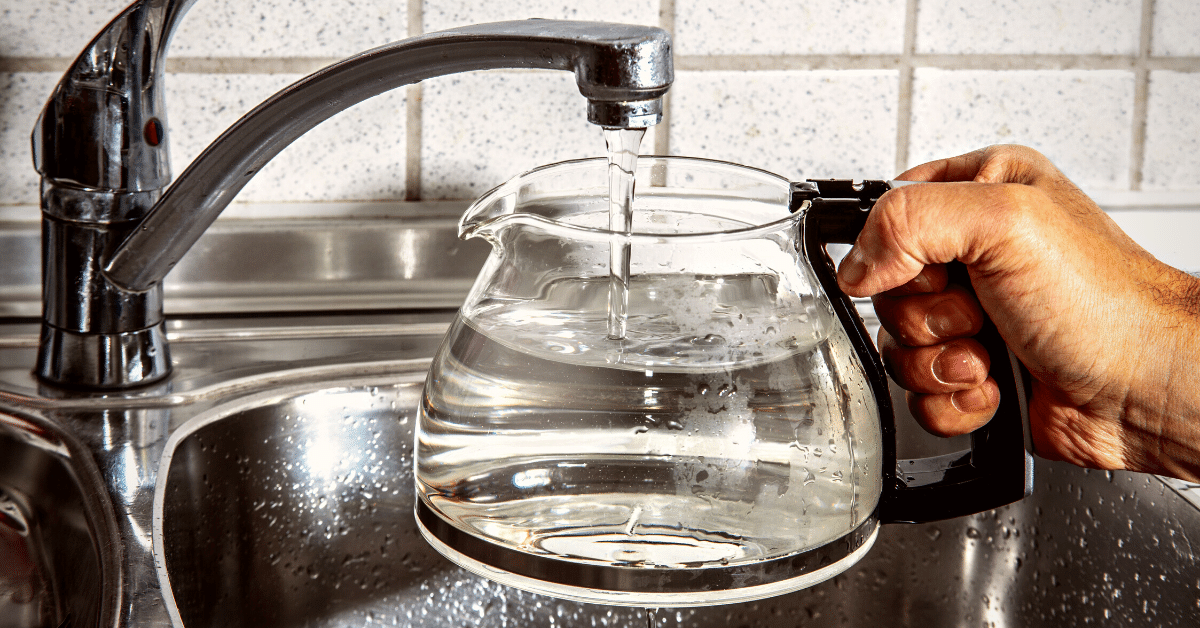
A lot of people don’t realize how important water quality is in the coffee world.
You see, water may look okay to the naked eye, but it can still contain impurities and pollutants that make it acidic.
When your water is acidic, this can cause creamer concerns. Here are a few ways to fix this.
Test Your Water’s pH Level
Testing the pH level of the water allows you to assess its quality. You can use pH testing strips, which are available in most drugstores or online.
Get one testing strip and dip it in the water. The strip will change color depending on the water’s acidity. Most coffee has an acidity of somewhere between 4.85 and 5.10.
Use A Water Filter
Impurities in your water can make it acidic. To prevent this from happening, you can get a water filter. This also ensures that the water you’re drinking is pure and clean.
4. Your Creamer Has Spoiled
Coffee creamer can also clump together in your coffee when it’s spoiled. The less fresh creamer is, the more lactic acids build up.
The lactic acid is what’s responsible for your creamer clumping together and curdling.
What’s worse is that spoiled creamer can lead to stomach aches and food poisoning. Here’s what to do if you think you’re struggling with this issue.
Taste The Creamer Prior
The best way to check whether creamer is spoiled is to taste it. Get a spoon and taste a bit of your creamer. Smelling it also helps.
You’ll know it’s time to replace your creamer when it tastes sour or has funky odors.
You can also check the expiration date. Most dairy foodstuffs are good for 7 days past their expiration date. After that, it’s time to toss them.
Pro tip: Placing coffee creamer in the refrigerator can also prolong its life.
5. Your Sugar is Ruining Your Creamer
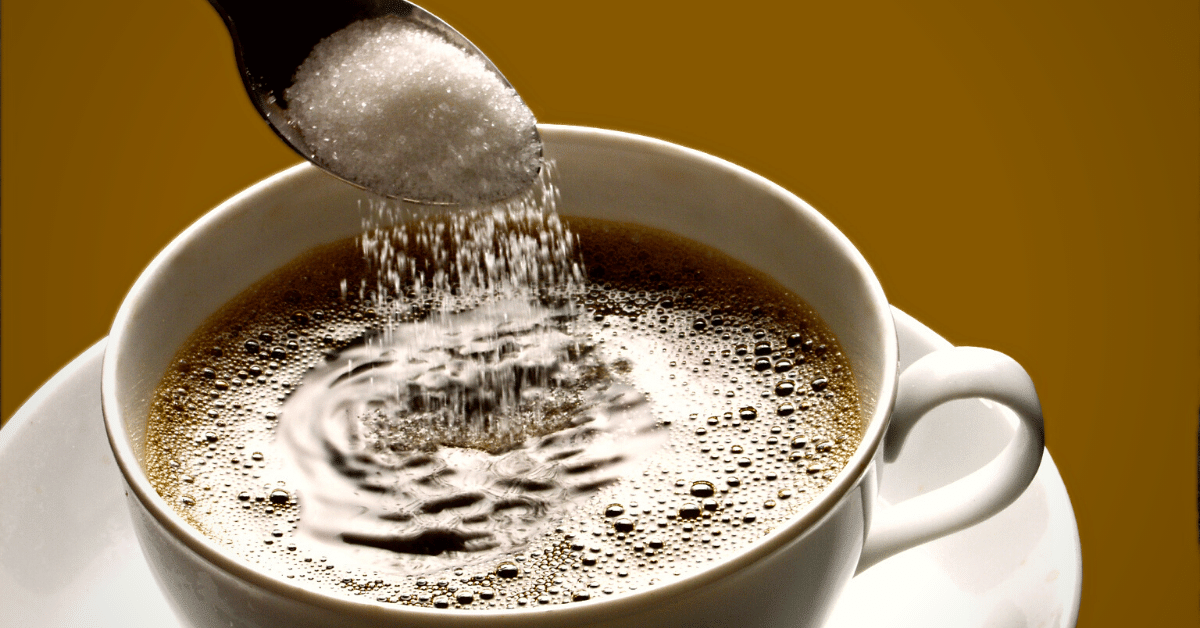
According to a study by the USDA, mixing sugar and creamer together before pouring hot coffee isn’t ideal.
Sugar absorbs the creamer’s water molecules, causing the milk proteins to activate before adding coffee.
The result? Your coffee creamer forms chunks on top of your hot coffee.
Here are a few ways to steer clear of this problem.
Mix Hot Coffee and Sugar First
Place sugar in your hot coffee and stir it properly. When sugar’s dissolved, that’s the time to add the creamer. Doing this minimizes and prevents the creamer from curdling.
Use Sugar Syrup Instead
You can also replace solid sugar with sugar syrup. Because sugar syrup is liquid, it won’t absorb the water molecules from your creamer. So, the chances of creamer curdling are lower.
6. You Don’t Know Your Creamer
Another reason why your creamer curdles is that you don’t exactly know its type and form. There are a lot of different kinds of creamers, and they come in both dairy and non-dairy forms.
Non-dairy alternatives curdle the fastest, especially when mixed with a highly acidic coffee.
Powdered and liquid forms also differ in their storage conditions.
The best way to prevent mishaps is to research the creamer you use.
Plus, check out how to properly store and use your creamer to avoid running into any hiccups.
Liquid vs. Powder Creamer: Curdling the Same Way?
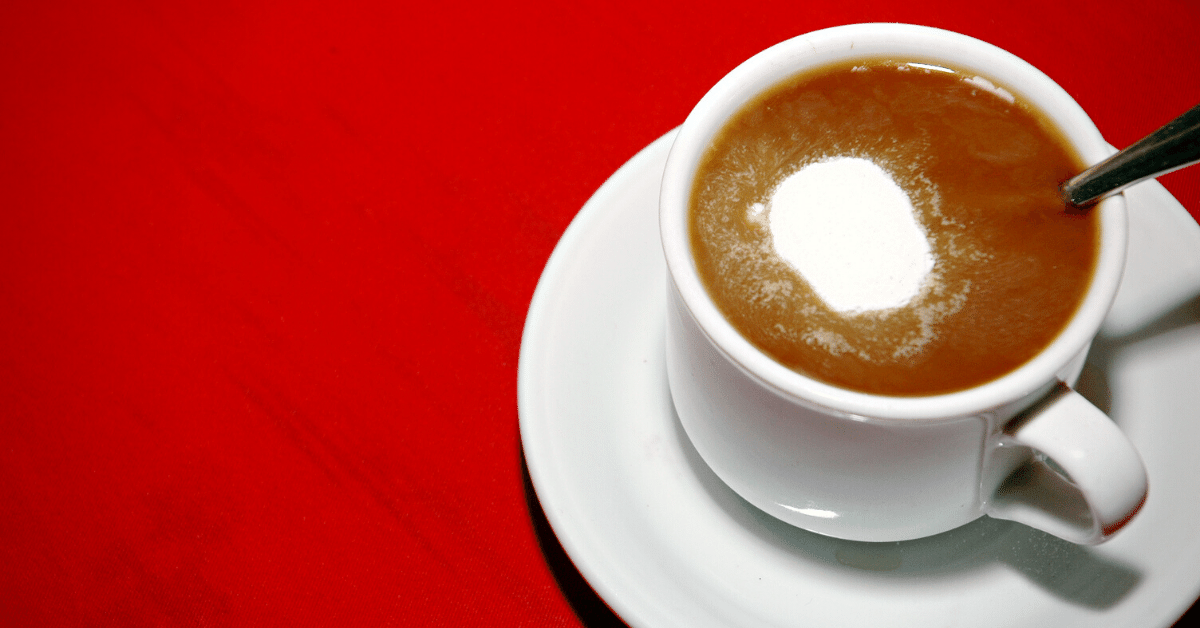
Coffee creamers come in two forms: liquid and powder. Each of these types of creamer curdles a bit differently.
For one thing, liquid creamers tend to be a bit more stable than powdered creamer. However, they generally need to be refrigerated to stop them from going bad.
Additionally, if you have high-volume creamer dispensers (such as in an office), you’ll want to use liquid creamer. This type of creamer is less prone to spoiling immediately after opening, even though it sits in a drink station for a while.
You should also protect your liquid creamers from moisture because it can affect their quality. Moisture can make liquid creamers go bad faster.
On the other hand, powdered creamers don’t need to be refrigerated. In fact, chilling powdered creamers can cause them to clump more and form chunks in your coffee.
To keep powdered coffee creamer fresh, place them in cupboards at room temperature. Avoid exposing them to heat because it also affects their taste and smell.
Also, powdered creamers don’t work for those who enjoy drinking cold coffee. They won’t dissolve, and you’ll end up with a cup filled with creamer lumps.
FAQ
Still got some questions about curdling creamer? Check out these frequently asked questions to clear up any lingering doubts.
Is It OK to Drink Curdled Cream in Coffee?
Except when the creamer is already sour and expired, it’s safe to drink chunky creamer in coffee. The cream curdling results from a chemical reaction, so it’s not dangerous. However, it might not taste as good as fresh cream!
Can Non-dairy Creamers Curdle?
Non dairy creamer such as soy, almond, and coconut milk creamer can still curdle. They also contain dairy milk proteins, explaining why clumping can still occur.
Among the three, soy milk forms chunks the easiest. The main reason non-dairy creamers curdle is due to the coffee’s heat and acidity.
How Long Until Creamer Goes Bad?
Unopened liquid creamers can last one to two weeks beyond their expiration date, provided that you chill them. But, once you open them, they can only last for one to two weeks.
On the other hand, powdered creamers last longer. As long as you store them at room temperature, they can last for months.
Final Thoughts
Your coffee creamer curdling does not necessarily mean it’s expired. It can mean any of the following:
- Your coffee is acidic.
- The sudden temperature changes interfere with the creamer’s milk proteins.
- The water you use is acidic or has impurities.
- You mix sugar and creamer together before adding hot coffee.
- The creamer is spoiled.
- You don’t know your coffee cream properties.
Just remember to check your creamer and to proceed with caution if it is spoiled. That way, you can avoid unhealthy side effects.
Are you interested in how to keep your coffee from spoiling? Check out this article on how long you can leave your coffee sitting out.


